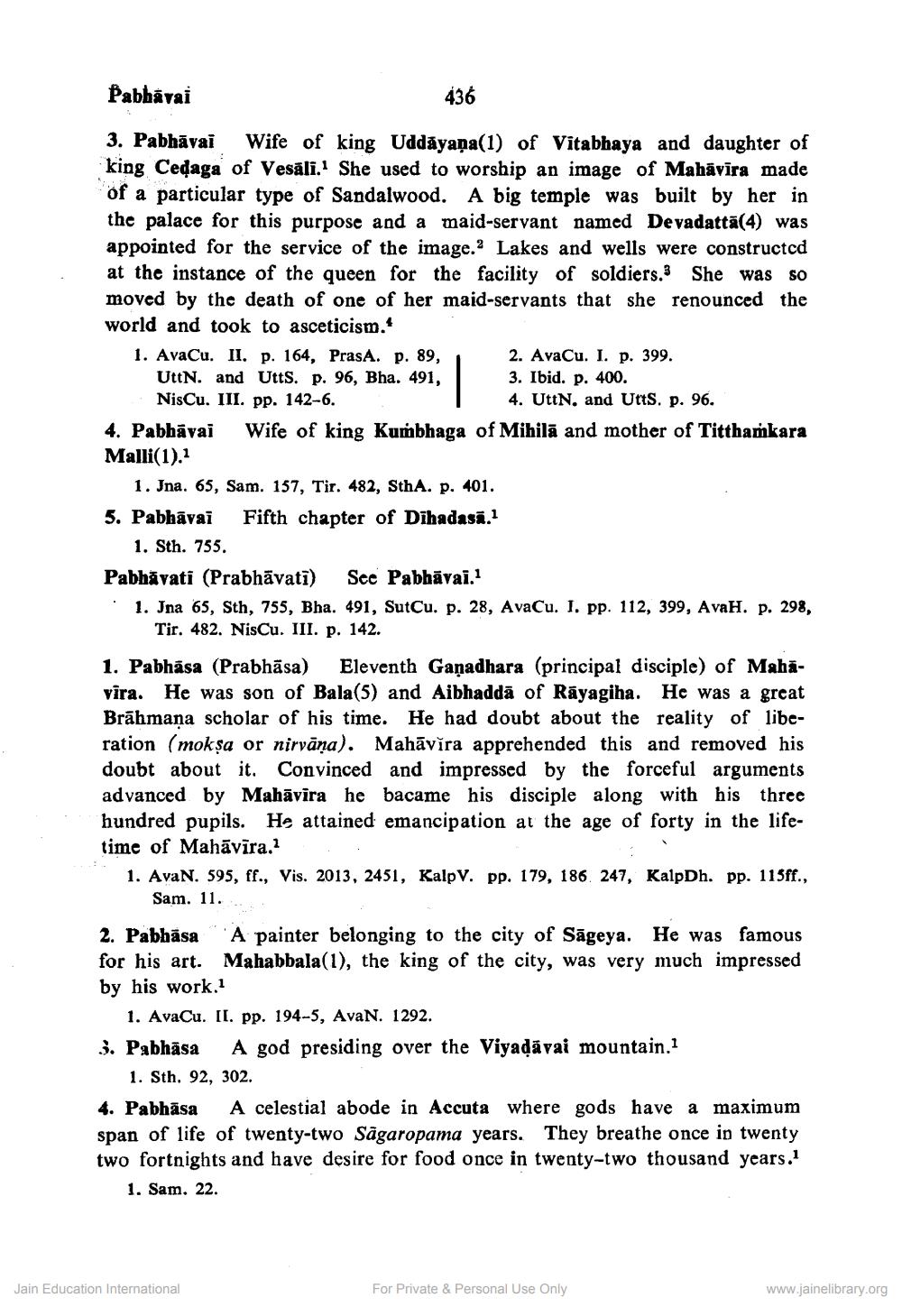________________
Pabbávai
436
3. Pabhāvai Wife of king Uddayana(1) of Vitabhaya and daughter of king Cedaga of Vesali. She used to worship an image of Mahāvīra made of a particular type of Sandalwood. A big temple was built by her in the palace for this purpose and a maid-servant named Devadattā(4) was appointed for the service of the image.? Lakes and wells were constructed at the instance of the queen for the facility of soldiers. She was so moved by the death of one of her maid-servants that she renounced the world and took to asceticism." 1. AvaCu. II. p. 164, Prasa. p. 89, 2. AvaCu. I. p. 399.
Uttn. and Utts. p. 96, Bha. 491, 3. Ibid. p. 400. NisCu. III. pp. 142-6.
4. UttN. and Utts. p. 96. 4. Pabhāvai Wife of king Kumbhaga of Mihilā and mother of Titthamkara Malli(1).
1. Jna. 65, Sam. 157, Tir. 482, SthA. p. 401. 5. Pabhāvai Fifth chapter of Dihadasā.
1. Sth. 755. Pabhāvati (Prabhāvatī) See Pabhāvai. 1. Jna 65, Sth, 755, Bha. 491, Sutu. p. 28, AvaCu. I. pp. 112, 399, AvaH. p. 298,
Tir. 482. NisCu. III. p. 142. 1. Pabhāsa (Prabhāsa) Eleventh Gaņadhara (principal disciple) of Mahavīra. He was son of Bala(5) and Aibhaddā of Rāyagiha. He was a great Brāhmaṇa scholar of his time. He had doubt about the reality of liberation (moksa or nirvāņa). Mahāvīra apprehended this and removed his doubt about it. Convinced and impressed by the forceful arguments advanced by Mahāvīra he bacame his disciple along with his three hundred pupils. He attained emancipation at the age of forty in the lifetime of Mahāvīra. 1. AvaN. 595, ff., Vis. 2013, 2451, Kalpv. pp. 179, 186, 247, KalpDh. pp. 115ff.,
Sam. 11.. 2. Pabhāsa A painter belonging to the city of Sāgeya. He was famous for his art. Mahabbala(1), the king of the city, was very much impressed by his work.
1. AvaCu. II. pp. 194-5, AvaN. 1292. 3. Pabhāsa A god presiding over the Viyadāvai mountain.1
1. Sth. 92, 302. 4. Pabhāsa A celestial abode in Accuta where gods have a maximum span of life of twenty-two Sägaropama years. They breathe once in twenty two fortnights and have desire for food once in twenty-two thousand years.1
1. Sam. 22.
Jain Education International
For Private & Personal Use Only
www.jainelibrary.org




